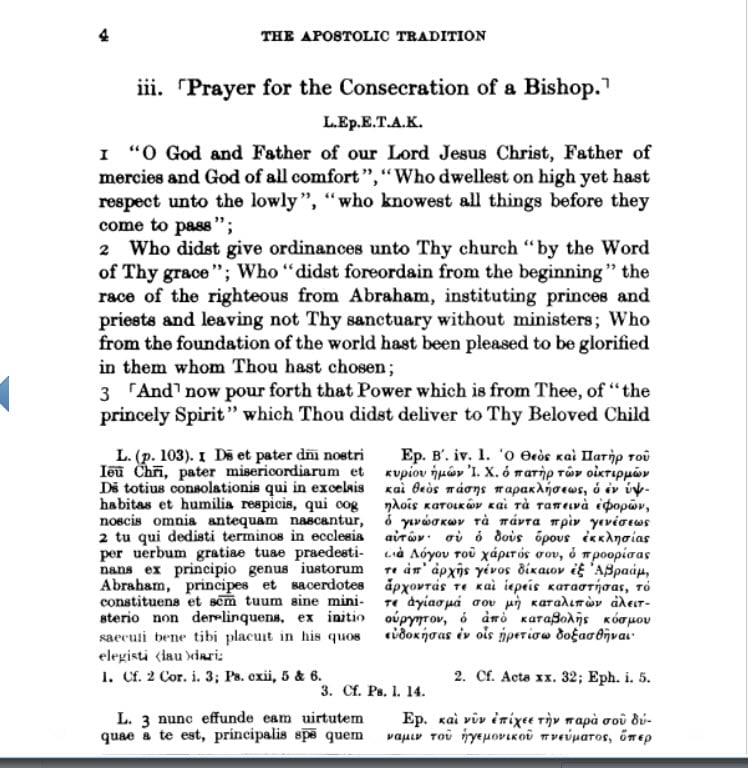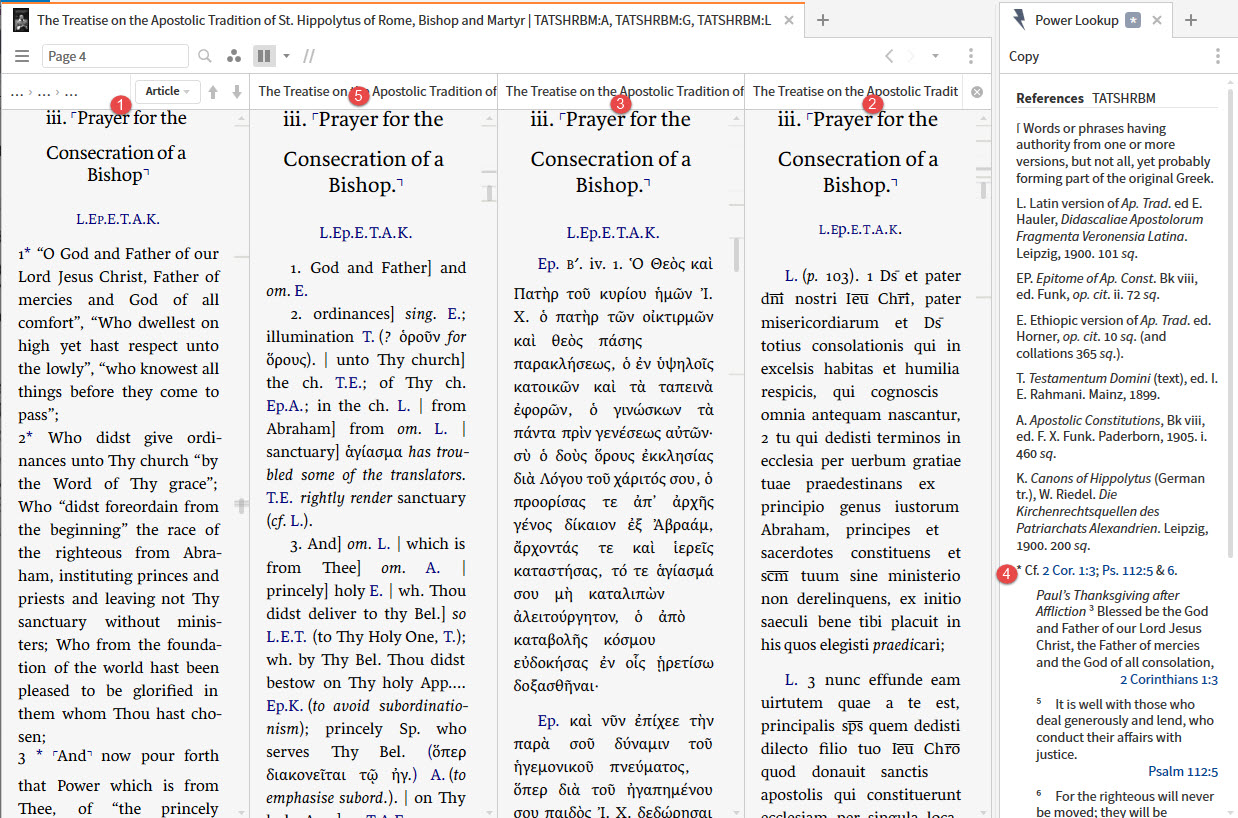Yes, I am still using Hippolytus of Rome. The Treatise on the Apostolic Tradition of St. Hippolytus of Rome, Bishop and Martyr. Edited by Gregory Dix. Vol. I. London; New York: Society for Promoting Christian Knowledge; The Macmillan Company, 1937. as my example - I'll claim it is because of my fondness for all things Gregory Dix.
Step One:
First, I tracked down all four parts to the resource. It appeared likely that the note attached to the English text was intended for the Latin and Greek as well - especially since the "note" number appeared to always match the text "paragraph" number. So I tracked down a sample page of the original book ... a curious journey through Google books and Amazon. This brought me to:

which:
- confirmed my hunch that the "footnotes" applied to English, Latin, and Greek
- showed me that the author's expectation was that I would read the texts in parallel, able to move among them to check specific points
- showed me that the author also expected me to have the apparatus appropriate to the text at my fingertips as I read the text.
Note this expectation of the reader is quite different than endnotes where the author has no obvious reason to believe you read them as you go along.
This meant that I needed a multiview panel for the resource. Let the fun/frustration begin:

Three bugs/frustrations:
- I cannot control the sequence of resources in the collection (auto-collection built from series) which means that the columns cannot reflect the order on the written page (numbers in the picture are the sequence on the printed page. Here the "big deal" is that the apparatus comes before rather than after the Greek and Latin texts.
- Unless I messed up somewhere, it appears that the multiview pane overrides the page mode option so I must use Power Lookup to see the Biblical References ("footnotes" that appear on the page.
- No where in the resource or in the library am I given a hint as how to read the book and have it make sense. No where tells me these are parallel not sequential units. No where tells me (nor can I save the fact) that Power Lookup is required for a complete view.
The net result is the feeling that I've been duped - a great resource produced in a manner to provide maximum linguistic study value while forgetting that I might actually want to read the book.